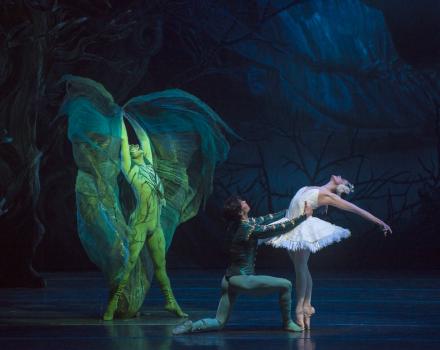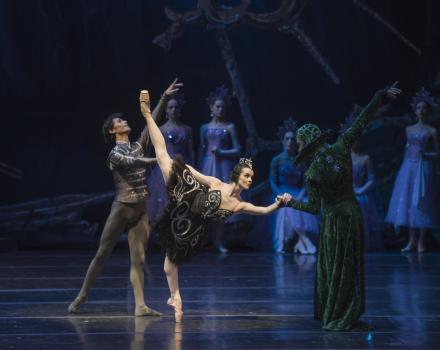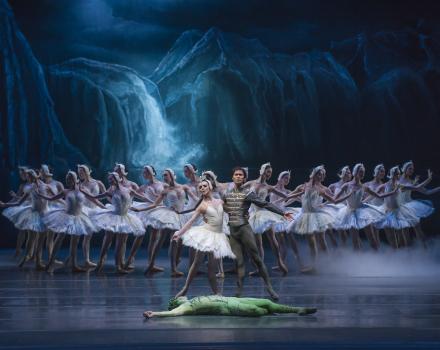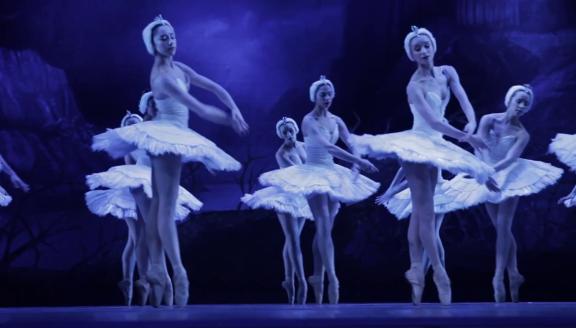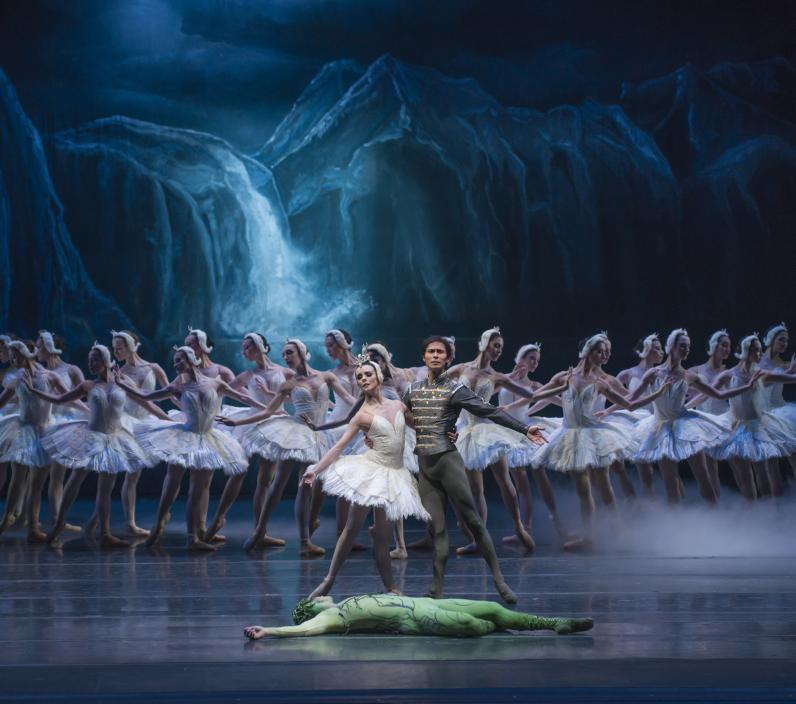

Swan Lake

A young maiden is cursed to live by day as a white swan, only regaining her human form at night. When a young prince falls madly in love with her, he tries everything in his power to free her from her spell...
Undoubtedly the most famous classical ballet, Tchaikovsky’s first ballet Swan Lake is a timeless love story that has captivated audiences for generations. The Brazilian dancer and choreographer Marcia Haydée offers a daring new reading in which the antagonist Rothbart, often relegated to a secondary role, joins the couple of lovers in the spotlight.
Cast
|
Prince Siegfried
|
César Morales
|
|---|---|
|
Odette/Odile
|
Andreza Randisek
|
|
Rothbart
|
Rodrigo Guzmán
|
|
Dancers
|
Étoiles, First Dancers, Soloists and Dance Team of the Ballet of Santiago
|
|
Orchestra
|
Orquesta filarmónica de Santiago
|
| ... | |
|
Music
|
Pyotr Ilyich Tchaikovsky
|
|---|---|
|
Conductor
|
Konstantin Chudovsky
|
|
Choreography & Artistic Direction
|
Marcia Haydée
|
|
Orchestral arrangements
|
Albena Dobreva
|
|
Sets and costumes
|
Pablo Núñez
|
|
Lighting
|
Ricardo Castro
|
| ... | |
Video
The story
Act I
The audience is immersed in the world of Rothbart. This magician, half human, half animal, can transform himself into anything he wants. He seduces the princes and makes them fall into his trap with his enchanted swans. Every prince who cannot rescue the swans signs his death warrant and Rothbart's power increases with every failed attempt. In this way, his magical powers have grown to immeasurable proportions over the years.
Prince Siegfried is celebrating his birthday in the little village at the foot of the castle. Free from all his court obligations, the prince is happy. To honour him, the villagers give him a hunting bow. His mother arrives to remind him that the next day, at the ball to be held at the castle, he must choose a princess to marry in order to become king. The young man does not want to take on the responsibility of marriage without knowing true love. The queen leaves behind a resigned prince, who knows that he must obey his mother. Rothbart, who watches the whole scene, makes Siegfried see and follow a swan, knowing the passion he has for these creatures.
Rothbart transforms the scene into a lake made of the tears of the enchanted swans’ mothers. A swan lands and transforms into Princess Odette. At the sight of this being, half woman, half swan, Siegfried falls madly in love. Odette tells him her misfortune, moved by her story, he swears her love and fidelity and to do everything in his power to free her.
Act II
The four chosen princesses are presented in a big dance. The prince refuses to choose any one of them to marry. At that moment, Rothbart appears dressed as a handsome nobleman. He arrives with his daughter Odile, whom he presents as Odette, deceiving the prince. Siegfried swears eternal loyalty to Odile, choosing her as his future wife. It is then that Rothbart reveals his farce and the prince collapses in pain.
Convinced of his victory, Rothbart takes Siegfried with him to the caves. But he has not measured the power of Siegfried's love for Odette: the young man awakens from his enchantment, escapes from Rothbart and leaves in search of his beloved.
Prince Siegfried meets the unhappy Odette again by the lake, approaches her and convinces her of his love. A confrontation with Rothbart is inevitable. The angry and vengeful swans intervene with all their power. Realizing that no prince has ever come this far, they launch themselves against Rothbart, who pays with his life and thus releases Odette from the spell, who marries Prince Siegfried and finds happiness.
Insights
Brazilian-born dancer and choreographer Marcia Haydée is nothing short of an icon. Famous choreographer John Cranko made her his prima ballerina at the leading dance company Stuttgart Ballet. She inspired Kenneth MacMillan, John Neumeier and Maurice Béjart to create some of their most memorable masterpieces and danced with Rudolf Nureyev, Mikhail Baryshnikov, Anthony Dowell and Jorge Donn.
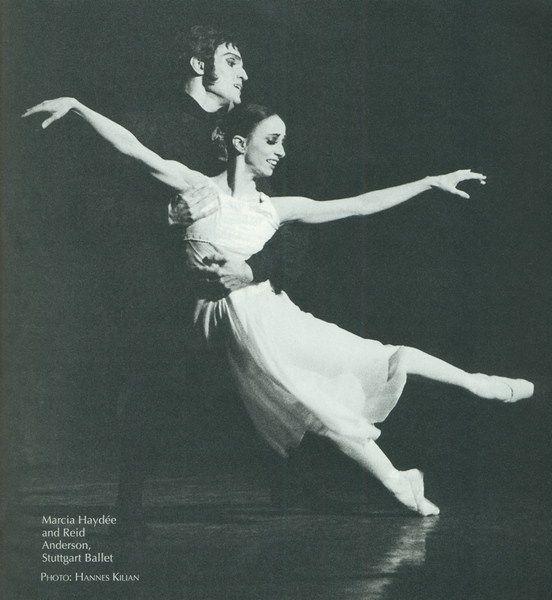
But Marcia Haydée is not a passive muse. After Cranko’s tragic death, she led the Stuttgart Ballet from 1976 to 1996 and directed the Santiago Ballet in Chile from 1992 to 1996 and again since 2004. She also established herself as a talented choreographer with an amplified version of Sleeping Beauty in 1987. Littered with the most prestigious international prizes, these days Haydée dedicates herself to her passion behind the scenes, creating remarkable dance productions.
Gallery
